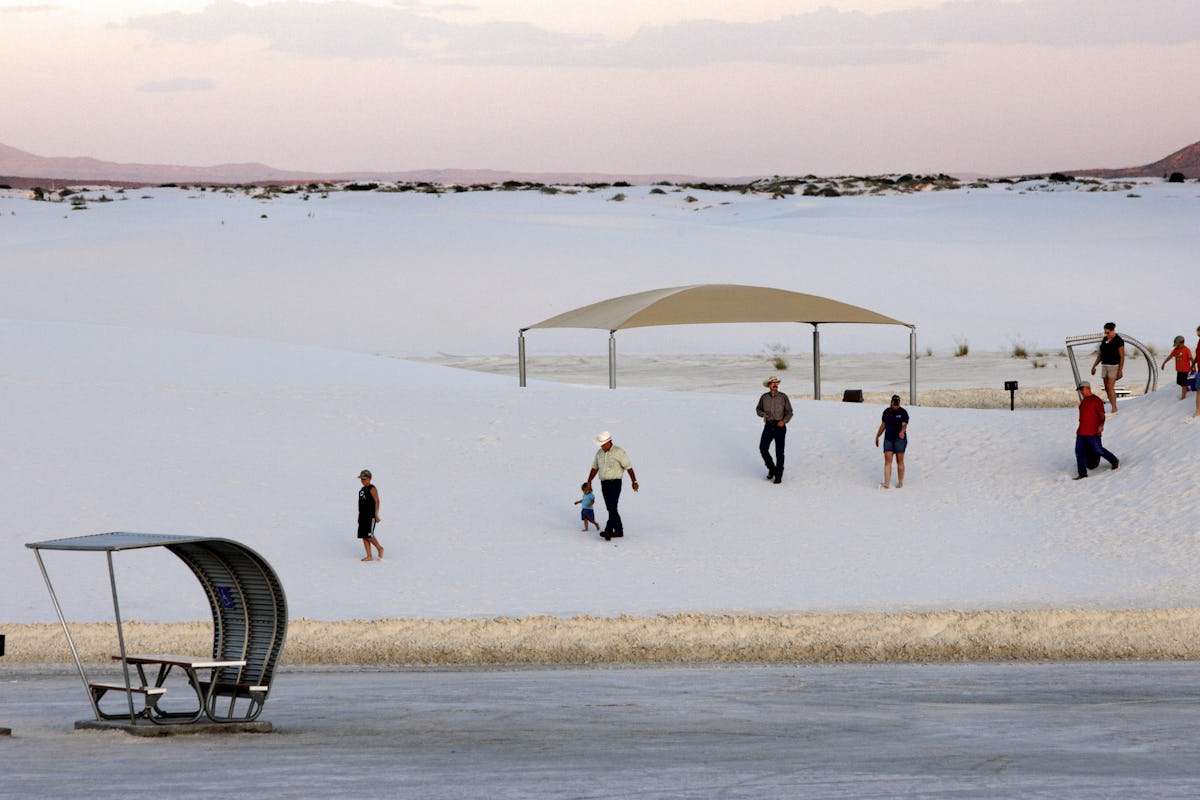White Sands National Park is an American national park located in the state of New Mexico and surrounded by the White Sands Missile Range. The park covers 145,762 acres in the Tularosa Basin, including the southern 41% of a 275 sq mi field of white dunes composed of gypsum crystals. White Sands was established as a national monument in 1933 and re-designated as a national park in 2019. At White Sands, it’s the unique dune environment that’s being preserved. The gypsum dunes are home to a unique ecosystem of plants and wildlife, many of which only exist here at the northern end of the Chihuahuan Desert.
The “sand” in these miles of shifting dunes is not composed of silica, like most inland sand. Interestingly, the sand at White Sands is almost pure gypsum. Gypsum is different from many other rocks because it is readily soluble. That means it will dissolve in water, just like sugar or salt. When rain falls on the mountains, the layers of gypsum start to dissolve, and the gypsum runs down the mountains as fast as the water can carry it.
The gypsum dunes that makeup White Sands National Monument are unique in the world, and studying their geology provides valuable insights into the complex and fascinating processes that shape our planet’s surface. The story of the monument’s geologic history is one of ancient seas, tectonic upheavals, and the ceaseless work of wind and water.
